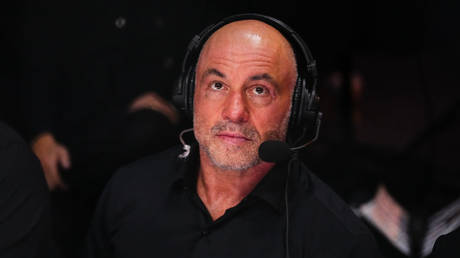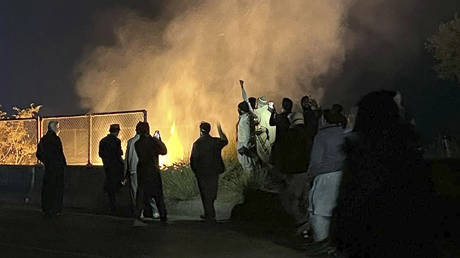Welcome back to the Monday Tennis Briefing, where The Athletic will explain the stories behind the stories from the past week on court.
This week, court speed became a hot and divisive topic, the tennis calendar’s imbalance became close to farcical, and the race to the WTA Tour Finals narrowed.
If you’d like to follow our fantastic tennis coverage, click here.
How did Roger Federer start a court-speed conspiracy theory?
When Roger Federer sat down to record a Laver Cup edition of Andy Roddick’s podcast, “Served,” he probably didn’t expect to start a conversation that would lead to world No. 3 Alexander Zverev claiming that tournaments deliberately favor Zverev’s rivals, world No. 1 and No. 2 Carlos Alcaraz and Jannik Sinner.
When asked about tennis court speed, Federer launched into the potted history of how tennis surfaces — clay, grass, and hard — have homogenized in the past 30 years. He said that tennis would be best if the best players had to figure out the same opponents on “lightning fast” and “super slow” courts. He said that ball speed and court speed make everything basically the same.
And then he lit a fire.
“I understand the safety net that the tournament directors see, making the surface slower, because the weaker player, he has to hit extra-amazing shots to beat Sinner, whereas if it’s quick, he can only maybe blast a few at the right time and he gets past.
“So that’s when the tournament directors, they’re like ‘Ahhh I kind of like having Sinner and Alcaraz in the final.’”
A few days later, Zverev was asked about court speed at the Shanghai Masters, which has seen a major slowdown this year, according to Court Pace Index (CPI) data. This year, its centre court rates at 32.8, between slow and medium-slow; last year it was 42.4, which would be medium-fast to fast.
“I hate when it’s the same,” Zverev said in an on-court interview.
“I know that the tournament directors are going toward that direction because obviously they want Jannik and Carlos to do well every tournament, and that’s what they prefer.”
Sinner responded to Zverev’s comments in an interview with BB Tennis. “We don’t, at least I don’t make the courts,” he said. Alcaraz is absent from the Shanghai Masters, having withdrawn with an ankle injury.
Court speed is a complex, contentious topic. CPI, which uses Hawk-Eye’s ball triangulation technology, measures the coefficient of friction — how much ball speed decreases upon contact with the court — and of restitution — which effectively measures how bouncy a court is. It also takes into account weather conditions and the game style of the player whose shots are being used in the calculation, but it is a limited metric. It is presented as an average, usually only covers the show court at a given tournament, and historic data is limited.
As a result, other metrics, like ace rate and rally length, are used to measure court speed. Ordinarily, the more aces, the faster the court; the shorter the rallies, the faster the court. But at source, these players don’t take into account the balls being used, the weather conditions, or the players in the draw: a hypothetical tournament full of serve bots played on clay might have a high ace rate, but that wouldn’t have much to do with court speed.
But the most difficult thing about using court speed to understand tennis is that players don’t always agree with the objective data, because it is also a sport of perception. Federer’s comments about surfaces all being slowed down were more true in the mid-2010s, but they aren’t now — hard courts across the tour have sped up in the past five years, with any homogeneity now in the medium-fast range; prior to this year’s Shanghai Masters rating, Indian Wells was the only slow or medium-slow hard court on the entire circuit. His perception is colored by how and when he played the sport, as players’ perceptions are during tournaments.
In match conditions, a player facing a high, heavy hitter in the heat of the day will experience a court differently to a player facing a flat, low hitter late at night; humid conditions speed up the flight of a tennis ball according to physics, but players experience them as a wearing heaviness which fluffs up balls with moisture and makes things feel slow. A slower ball will make the same court feel slower than a faster ball would. Court speed, as perceived by a player, can change from match to match, so when they speak about the speed and their experiences conflict with data, things get noisy for fans.
This makes court speed both an objective measurement and a moving target, something that is useful from a bird’s-eye view to understand the sport but perhaps less useful when taking account of players’ opinions.
Which brings things back to Zverev. Sinner and Alcaraz are not winning most tournaments because of court speed; they are winning most tournaments because the way they play the sport is most suited to winning on the surfaces on which it is currently played.
While their styles do not change dramatically from court to court, they necessarily do adapt to speed: Alcaraz just managed to create enough time for himself to use variety late in the French Open final after Sinner had pinned him back; at Wimbledon, Sinner sustained the barrage for the win. At the U.S. Open Alcaraz showcased even more variety than he did in Paris — on a much quicker court. Of the three players, Zverev’s style is the most identikit across surfaces, while Sinner and Alcaraz’s hyperaggression and ability to flip defense to attack from just about anywhere is simply the most effective — and rare — way to play.
Much like every debate about court speed, some of Federer’s comments landed in; others missed the mark.
— James Hansen
Who will win the race to the WTA Tour Finals?
The scrap to qualify for next month’s season-ending WTA Tour Finals in Riyadh is narrowing. The eight singles players who have won the most ranking points in the current season qualify for the event, and five of the spots have already been secured. Coco Gauff, Amanda Anisimova and Madison Keys this week joined Aryna Sabalenka and Iga Świątek, with Anisimova qualifying for the first time and Keys doing so for the first time in nine years.
Keys has not met the ranking points cut for qualification, but per the WTA Tour, her “qualification is assured, as she will finish the season within the Top 7 on the PIF WTA Race to the Finals Leaderboard or as a Grand Slam champion in the No.8-20 position.”
Jessica Pegula of the United States and Russia’s Mirra Andreeva have all but secured the next two spots, leaving this week’s Wuhan Open — the final WTA 1000 of the year — as one of the few opportunities for the players below them to earn points. Kazakhstan’s Elena Rybakina and Jasmine Paolini of Italy, who are separated by only 55 points at No. 8 and No. 9, are effectively in a straight shootout for the final spot:
That’s a wafer-thin margin, which makes their Wuhan Open results crucial. The outcome in China could lead to one, or both, of Rybakina and Paolini embarking on a dash for points at some of the smaller tournaments between now and the end of the month.
— Charlie Eccleshare
Is this the most absurd part of the tennis calendar?
Tennis consistently fails to engage casual fans because of its complicated schedule. While top players find the near omnipresence of tournaments draining toward the end of the season, it’s a brilliant opportunity to capture attention. Instead, competing visions for how to maximize the biggest events outside of the Grand Slams generate some farcical crossovers.
This has been especially apparent in the weeks before and after the U.S. Open, with some tournaments finishing on Sundays, others on Tuesdays, and even a Wednesday final here and there. Last week, the ATP and WTA tours were both in Beijing, but the men’s China Open finished Wednesday, while the women’s event carried on until Sunday. The men’s China Open is a 500, named for the ranking points awarded to the winner, while the women’s is a WTA 1000, the rung below the Grand Slams.
The ATP then started another tournament — the Shanghai ATP Masters 1000 — on Wednesday. That followed world No. 1 Alcaraz beating world No. 4 Taylor Fritz to win the Japan Open (a 500) in Tokyo on Tuesday, the day before world No. 2 Sinner won the China Open.
The in-tournament scheduling only exacerbated things for the rest of the week. Despite all the tennis going on, there was little meaningful action on Thursday and Friday. In keeping with most 1000-level events, the women’s China Open played its quarterfinals over two days, meaning just two matches per day. Meanwhile, the Shanghai Masters began with no top players in action, because the top 32 receive byes in the first round.
Confusing crossovers like these make this part of the season, which already lacks the feel of a home straight that it should have, even harder for fans to follow.
— Charlie Eccleshare
Shot of the week
Sinner had to retire from his Shanghai Masters match against Tallon Griekspoor with cramps, but this drop shot off a ball with almost no pace on it was stunning:
🏆 The winners of the week
🎾 ATP:
🏆 Carlos Alcaraz (1) def. Taylor Fritz (2) 6-4, 6-4 to win the Japan Open (500) in Tokyo. It is the Spaniard’s eighth title of 2025.
🏆 JannikSinner (1) def. Learner Tien 6-2, 6-2 to win the China Open (500) in Beijing. It is the Italian’s third title of 2025.
🎾 WTA:
🏆 AmandaAnisimova (3) def. Linda Nosková (26) 6-0, 2-6, 6-2 to win the China Open (1,000) in Beijing. It is the American’s second WTA 1000 title.
📈📉 On the rise / Down the line
📈 Eva Lys moves up 21 places from No. 66 to No. 45, a career high.
📈 Zizou Bergs ascends four spots from No. 44 to No. 40, also a career high.
📈 Linda Nosková enters the top 20 for the first time after rising 10 spots from No. 27 to No. 17.
📉 Yulia Starodubtseva falls 45 places from No. 86 to No. 131.
📉 Tomáš Macháč falls six places from No. 23 to No. 29.
📉 Karolína Muchová drops seven spots from No. 15 to No. 22 after failing to emulate last year’s China Open final run.
📅 Coming up
🎾 ATP
📍Shanghai: Shanghai Masters (1,000) featuring Novak Djokovic, Holger Rune, Gabriel Diallo, Valentin Vacherot.
📺 UK: Sky Sports; U.S.: Tennis Channel 💻 Tennis TV
🎾 WTA
📍Wuhan: Wuhan Open (1,000) featuring Aryna Sabalenka, Iga Świątek, Coco Gauff, Amanda Anisimova.
📺 UK: Sky Sports; U.S.: Tennis Channel
Tell us what you noticed this week in the comments below as the men’s and women’s tours continue.
This article originally appeared in The Athletic.
Sports Business, Tennis, Women’s Tennis
2025 The Athletic Media Company





